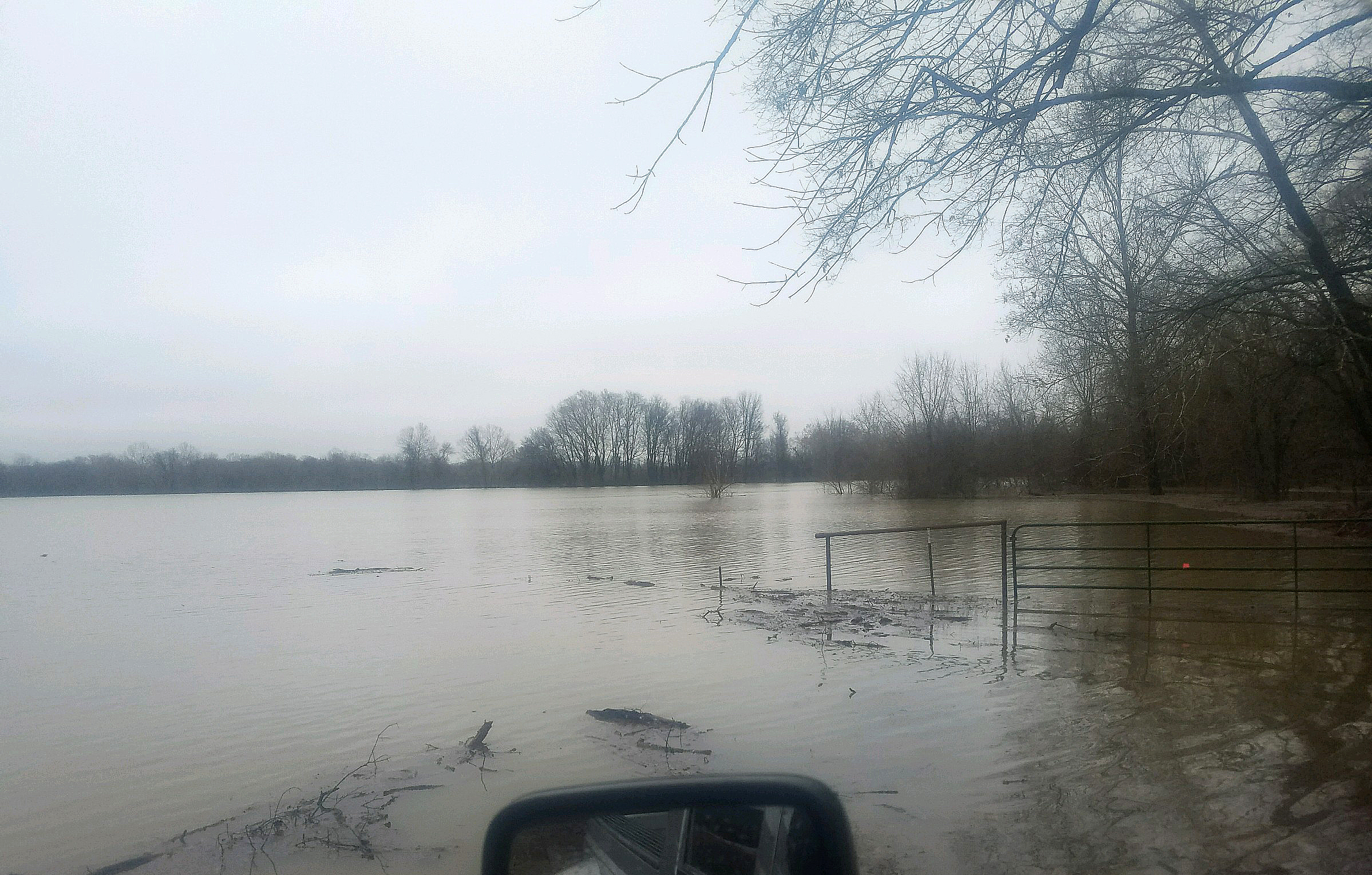Flooded wells could mean contaminated water supply
Feb. 28, 2018
By Mary Hightower
U of A System Division of Agriculture
Fast facts:
- Flooded wellhead could mean contaminated drinking supply
- Have water tested
- Shock chlorination, inexpensive, efficient means of disinfection
(350 words)
(Newsrooms: with file art of flooding here - https://flic.kr/s/aHsktByKyK)
Download Word version
LITTLE ROCK – When flooding submerges wellheads, there’s a good chance the well water supply has been contaminated, said Mike Daniels, water quality specialist for the University of Arkansas System Division of Agriculture.
“However, even if flooding has occurred nearby, then it is a good idea to have the water supply tested to assure it is still safe for humans and livestock,” he said. “If there is any doubt about whether the quality of a water supply has been compromised, it’s important to have that water tested and follow procedures to sanitize the water supply.”

You may submit water samples to the state Health Department or the Arkansas Water Quality Lab. Learn how to collect a sample to get an accurate result here: https://arkansas-water-center.uark.edu/water-quality-lab.php.
“It’s best to submit the sample within 24 hours after collection,” Daniels said. However, “as long as the sample has been refrigerated, it will be about to provide realistic results for up to four days.”
If the results show more than 10,000 colony forming units of total bacteria per milliliter, more than 100 colony forming units of coliform bacteria, or more than 50 colony forming units per milliliter, it’s a good idea to shock chlorinate the well.
Shock chlorination is a process by which home water systems, such as wells, springs and cisterns are disinfected using liquid bleach, or chlorine.
“It is the most widely recommended means of treating bacterial contamination in home water system as it is the quickest, cheapest and most efficient method of treatment,” Daniels said. “Shock chlorination should only be done when the water supply will not be used by humans or animals for at least 24 hours because the initial chlorine levels are not safe to drink.”
Learn more about shock chlorination in MP292, Improving Home Water Quality www.uaex.uada.edu/publications/pdf/MP292.pdf
About the Division of Agriculture
The University of Arkansas System Division of Agriculture’s mission is to strengthen agriculture, communities, and families by connecting trusted research to the adoption of best practices. Through the Agricultural Experiment Station and the Cooperative Extension Service, the Division of Agriculture conducts research and extension work within the nation’s historic land grant education system.
The Division of Agriculture is one of 20 entities within the University of Arkansas System. It has offices in all 75 counties in Arkansas and faculty on five system campuses.
Pursuant to 7 CFR § 15.3, the University of Arkansas System Division of Agriculture offers all its Extension and Research programs and services (including employment) without regard to race, color, sex, national origin, religion, age, disability, marital or veteran status, genetic information, sexual preference, pregnancy or any other legally protected status, and is an equal opportunity institution.
# # #
Media Contact: Mary Hightower
Dir. of Communication Services
U of A System Division of Agriculture
Cooperative Extension Service
(501) 671-2126
mhightower@uaex.edu